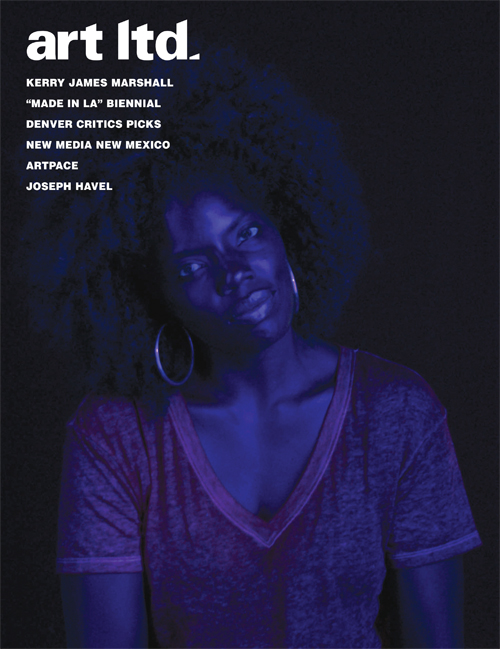In his newest work, the rigorously subversive Chicago painter unzips Barnett Newman
Excerpt:
In response to an agonizing absence of diversity in the canon of Western painting, Marshall inserts and asserts the black figure again and again in as many different poses, positions, moods and lifestyles as possible. In Garden Projects, he made large-scale landscapes of city housing projects that incorporate "gardens" into their names highlighting the dissonance between their idealized titles and the neglected circumstances that surround their residents. One such painting, Watts 1963, shows three black children pressing towards the front of the picture plane; white abstract blobs disrupt the otherwise representational landscape behind them like ghosts. Above, Disney-esque blue birds carry a somber banner reading "Here we rest." In his series Souvenir, Marshall painted middle-class African American living rooms whose inhabitants tend to the memories of Civil Rights figures from the 1960s--paintings that both celebrate history yet remain restrained: the houses he captures are perfectly staged, as if careful attention was paid to each object inside. Marshall is not only a painter, however. He has also made a comic book, "RYTHM MASTR," installations, video and sculpture: for instance a series of massive rubber stamps that lay down Civil Rights phrases, like BLACK POWER, which become neutered and ambivalent in the gallery setting. Often he incorporates glitter. In Vignettes, a more recent rococo series, he portrays black lovers playing in fields. In response to a book that Taschen put out, "The Great American Pin-Up" (which included no African-American women) Marshall painted black pin-ups. He regularly references other famous paintings in his work, binding his conceptual intent to technique and craft.

No comments:
Post a Comment